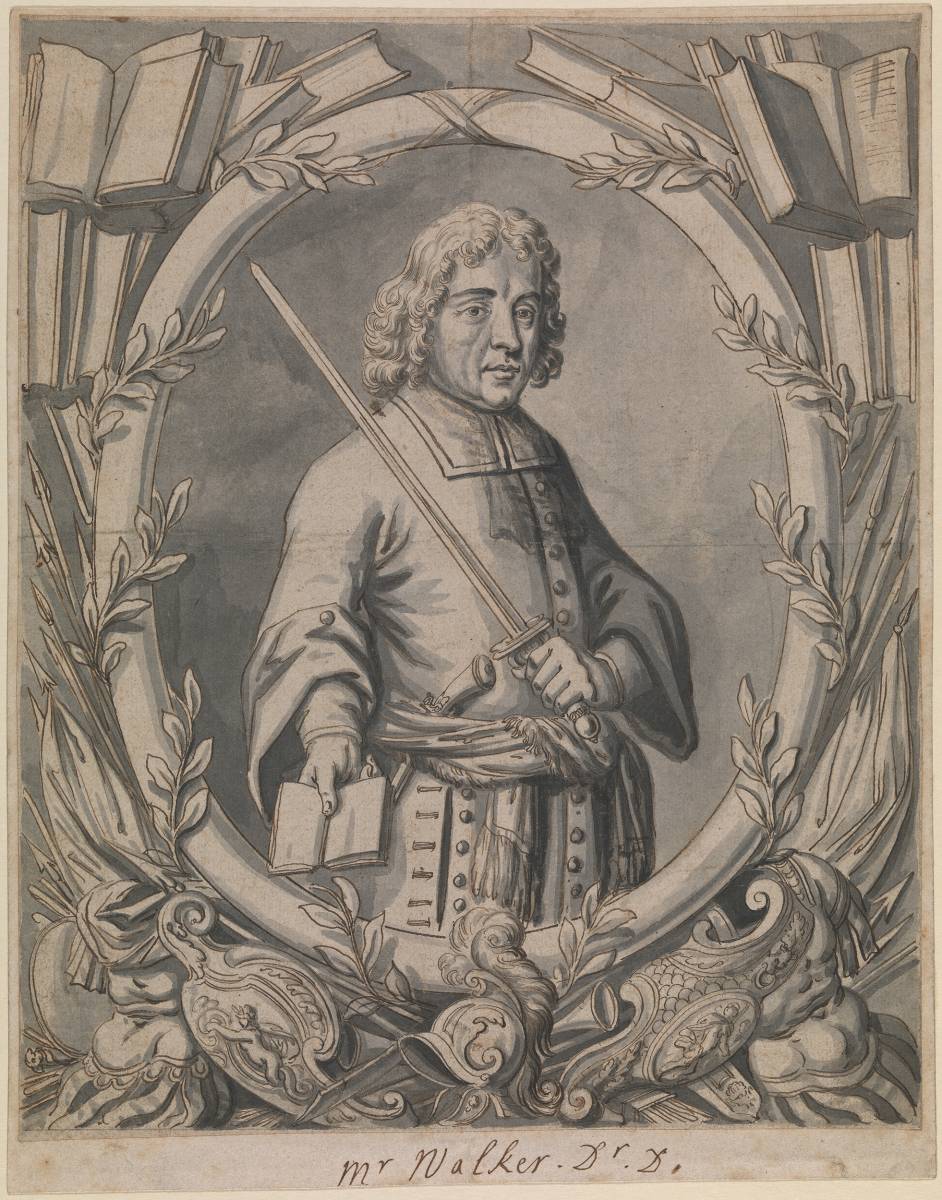This ink and wash drawing was made by the engraver and printseller John Savage in preparation for his engraving of George Walker, a theologian and soldier who was a celebrated governor of Londonderry killed at the Battle of the Boyne in 1690.[1] This drawing offers important evidence of the process engraver/printsellers went through to create images for the print market. Savage has framed the image of Walker, dressed in clerical bands, holding a sword, within a highly decorative border. Such emblematic borders were major features of the increasingly popular series of engraved heads which appeared in the first half of the eighteenth century.
Savage is a significant, if under researched figure in the evolution of British printmaking and printselling in the late seventeenth century. As Anthony Griffiths pointed out, Savage was responsible for the seventy-two plates of Tempest’s Cries of London published in 1688. The earliest sign of his activity yet noted is as engraver of plates for the Philosophical Transactions of the Royal Society from 1683 onwards. Savage entered the printselling business when he bought the shop of Isaac Beckett at the Golden Head in the Old Bailey from his widow in October 1688. According to a card in the Bagford collection Savage had purchased Beckett’s ‘mezzotinto plates & prints’ but pointing to the diversity of the trade, Savage also advertised: ‘all sorts of mezzo-tinto prints, frames, glasses &c.’[2] Made in 1689 shortly after the siege of Londonderry, Savage’s print was undoubtedly produced in an attempt to capitalise on popular interest in the news.


